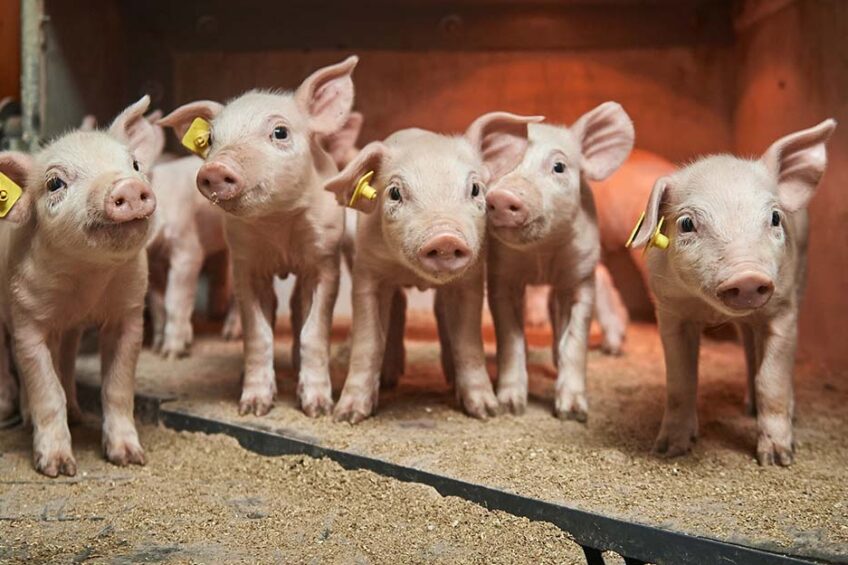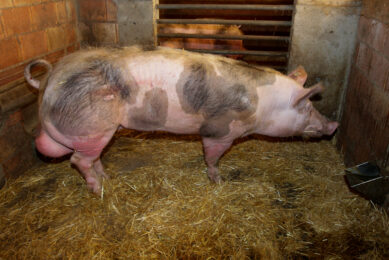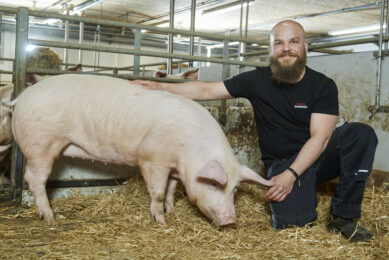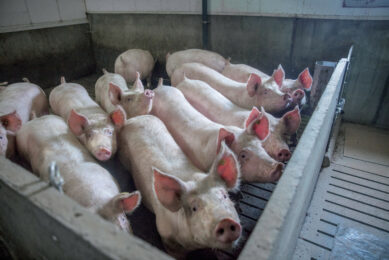Pig breeding is part of the solution to challenges

Pig breeding must be part of the solution to a major challenge facing animal production: community concerns about the environment, climate and animal welfare. Breeding can ease these concerns by providing animals with genetics that suit the production systems of the future.
There is little doubt that animal production has a future. Animals provide humans with high-quality protein, essential nutrients, and non-synthetic products. They also convert biomass that is unsuitable for human consumption into food, manure, and ecosystem services. Thirdly, they utilise land that cannot be used to produce other types of food, and they are deeply embedded into the economies and cultures of societies around the world.
Benefits come at a cost
However, like most other industries and businesses, these benefits come at a cost. Animal production uses land, water, and energy, and it degrades and pollutes terrestrial and aquatic ecosystems. It also encourages deforestation, emits greenhouse gasses, and rears animals in captivity.
Assuming communities are well fed and have their basic needs met – an important caveat – animal production will increasingly be expected to use fewer resources, reduce its impact on the environment and climate, and improve animal welfare.
Governments reacting to concerns
Governments, particularly in wealthy countries, are reacting to these concerns. They introducing change in the form of legislation, incentives and penalties to balance the economic benefits of animal production. For example, New Zealand’s government will charge farmers for the greenhouse gases their livestock emit. The Dutch and Belgian governments will halve nitrogen emissions by reducing livestock numbers. The German government has already introduced strict requirements for animal welfare with a short phase-in period. It did so without consulting any animal sector. The European Commission will phase out cage production of farmed animals.
In response to those changes, animal production must expand its definition of profit to include economic incentives and penalties associated with the environment, climate and animal welfare.
Expanded definition of profit
An expanded definition of profit will almost certainly lead to new production systems with revamped management strategies and husbandry practices as producers cope with the new legislation, pursue the incentives and avoid the penalties. The impact of these changes could be substantial. For example, producers who use cattle feedlots will need to improve animal welfare and reduce their impact on the environment and climate. Intensive pig, poulty, and fish enterprises may have reduced their impacts on the environment and climate, but they still cause animal welfare concerns.
No matter what the production systems of the future will be, they have one thing in common: they all require animals with genetics that make these systems profitable. This is where breeding must play a key role.
Breeding must be part of the change
Breeders use selection to improve desirable traits in animal populations. The underlying principle is to rank animals for these traits and choose the best to be parents, while controlling rates of inbreeding at acceptable levels. That principle will not change in future. What is likely to change is the direction of selection as breeders address community concerns for the environment, climate change and animal welfare, while maximising profit in future production systems.
Breeders can only change the direction of selection by defining new breeding goals. It is the only lever they have. Breeders define breeding goals by identifying the traits they want to improve and deriving economic values that allocate an appropriate amount of selection pressure to each of these traits.
New breeding goals will almost certainly reflect current breeding goals because they will include most, if not all, of the traits in current breeding goals. These are growth rate, feed efficiency, meat yield, litter size, conformation and survival. Not only do these traits increase economic returns, they also benefit the environment, climate and animal welfare by increasing production efficiency.
However, there are likely to be 2 striking differences. First, new breeding goals will also include new traits designed to benefit the environment, climate and animal welfare. Possible examples include reduced emissions of nitrogen, phosphorus and methane, lower production odours, and tail biting. Second, the economic values allocated to each trait will change to shift more selection pressure towards traits associated with the environment, climate and animal welfare.
Breeders need strong signals
Breeders who practice good-business management will need certainty before they embark on new breeding goals. They are unlikely to be the “first movers”. Breeders make selection decisions based on projected market conditions. However. there is a time lag before genetic gains made from these decisions are realised and disseminated to producers. If those projected conditions are incorrect, breeders risk wasting selection pressure on improving traits that are not profitable.
Governments and the community can assist all vested stakeholders in animal production by providing breeders with strong and early market signals. These signals are long-term legislation, incentives and penalties directed at producers.
They would enable breeders to define breeding goals with confidence, avoid selection for traits that can be improved by non-genetic methods, resist selection for traits that are merely indicators of profit, and hasten the time before animals with improved profit are disseminated to producers.
Making changes safely
Modern breeders are well-equipped to make gains in their new breeding goals because they are good at ranking animals. They rank animals by fitting sophisticated genetic-statistical models to phenotypes, pedigrees and genomic information. Ranking will only become more accurate in future as breeders develop better genetic-statistical models, improve phenotyping strategies and acquire new genetic technologies. That is good news for animal production because it implies faster genetic gains.
However, faster gains also call for caution. Breeders make genetic gains without understanding the full genetic and physiological consequences of selection on animal populations. Some of these consequences are unintended behavioural, physiological, metabolic, reproductive and immunological side effects. Faster genetic gains merely increase the risk of these side effects.
Clearly, improved safeguards are necessary to manage the increased risk of unintended side effects with faster genetic gains.
Breeders should consider 3 safeguards:
Controlling inbreeding within populations at acceptable rates is a safeguard against unintended side effects. It maintains genetic variation, reduces inbreeding depression, decreases the spread of deleterious recessives, and reduces variability in the rate of genetic gain.
Identifying selection criteria that enable breeders to allocate an appropriate amount of selection pressure to traits associated with the environment, climate and animal welfare; and
Monitoring and surveillance of animals to uncover unintended side effects before they spread through breeding populations.
While these safeguards protect animal populations from unintended side effects, many populations should also be maintained within commercial breeds. Maintaining many populations of each breed conserves genetic variation and provides a safeguard against production changes and market uncertainty. It increases the probability that some populations will cope with change better than others and enables producers to choose animals from populations best suited to their production systems.
Co-author: Lizette Vestergaard Horndrup











